Gout In Parrots And Other Birds – Avian Kidney Disease
Ron Hines DVM PhD
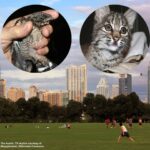 All Of Dr. Hines’ Other Wildlife Rehab Articles
All Of Dr. Hines’ Other Wildlife Rehab Articles
Tell Me About Gout In Birds
Gout in birds occurs when too much uric acid is present in its bloodstream. All birds produce uric acid and uric acid salts (urates) as a way of cleansing their bodies of the toxic ammonia-containing wastes left over from their protein metabolism. Reptiles do the same thing. Urates are that white material that accumulates on cage bottoms and is so hard to remove. That is because urate is hardly water-soluble. But we humans and all other mammals package and eliminate most of our waste ammonia in another much more soluble form – as urea, the substance that gives our urine its yellowish color.
Birds do not normally produce much liquid urine. Normally, the waste uric acid in their blood is filtered out by their kidneys, excreted, and forms the thick, chalky-white urate crystals that you see surrounding the bird’s actual stool. But when uric acid levels become too high in a bird’s blood stream for any reason, the material comes out of solution before the bird’s kidneys can excrete it. Instead, it forms clumps of crystals in various parts of its body. Sometimes these sharp urate crystals form around its joints; and sometimes they form in the bird’s internal organs destroying them. The first form is called articular gout and the second, visceral gout. It is a two-way street: high blood uric acid levels can be the cause of avian gout, and kidney failure for a variety of reason can also be the cause of gout.
Any kind of bird, domestic or wild, can develop gout. Traditionally, veterinarians saw the problem, most often in budgies, cockatiels and canaries – birds that consume little water. But as larger pet hook-bills have become more commonplace, we see more gout in them as well. Wild birds are not immune. Visceral gout due to the accidental consumption of NSAID medications is one of the main reasons vulture numbers have declined around the world. (read here) In domestic chickens and geese, visceral gout has been associated with feeding diets too rich in protein. Protein is the underlying source of uric acid.
How And Why Does My Pet Parrot Produce Uric Acid?
All birds must consume protein. In your bird’s digestive tract, these proteins are first disassembled into their individual amino acids and then absorbed into its bloodstream. Some of these amino acids are then re-assembled into the proteins that your bird needs for growth and development while immature. Others for repairing tissue like skin, lung and digestive tract linings. One of the greatest use of these amino acids in in forming new feathers to replace old ones. All enzymes and all hormones, other than sex and adrenal steroids, require these protein amino acid building blocks as well.
A sizable amount of the amino acids derived from protein-containing food are utilized “burned” in the bird’s liver to produce energy (calories). Birds have high metabolic rates that require a lot of calories to maintain. When this occurs, the remaining nitrogen portion of the amino acids need to be disposed of. That nitrogen, freed from these protein amino acids, is in the form of ammonia. But ammonia is toxic. So, birds and reptiles convert this waste ammonia to less-toxic uric acid. The uric acid is then eliminated through your bird’s kidneys as urates, the crystal salts of uric acid that you see. It is the white surrounding the splat – similar to the white of an egg when fried sunny side up.
How Does Gout In Birds Differ From Gout In People?
When gout occurs in humans, it is either due to an inherited genetic defect in metabolism (the most common cause) or to consuming too much alcohol, sugar or foods that are high in purines (meat and seafood). Just as perplexing as it is in birds, the majority of folks consume these products – even people with high blood uric acid levels – never develop gout. When uric acid falls out of solution in human blood, it forms the same irritating and destructive urate crystals (tophi) that it does in birds. Normal humans produce only small amounts of uric acid. The source of that uric acid is the breakdown of compounds called purines.
Unlike people, it is normal for birds to produce large amounts of uric acid. As I mentioned, the source of that uric acid is the protein the bird consumes in its diet as well as recycled portions of proteins that are part of its body. When gout occurs in a bird, it is due to a loss of kidney function, that is, the destruction of the bird’s ability to flush its normal high uric acid level from its body. If uric acid cannot leave your bird’s body fast enough through its kidneys, it will fall out of solution in tissues throughout its body. When you and I and all mammals lose kidney function, the result is high BUN and creatinine levels and uremia.
Does More Than One Form Of Gout Occur In Birds?
Yes.
There are two forms of gout, visceral gout and articular gout. But since they are both caused by the same kidney damage, many cases are combinations of both forms. Birds with primarily the visceral or body-organ form of gout accumulate most of their urate crystals in and surrounding their internal organs. Birds that develop primarily the articular form of gout accumulate most of their gout crystals surrounding their joints, and tendons – particularly the joints and tendons of the foot and hock. In both forms, these crystals irritate the surrounding tissue causing severe inflammation.
Is There More Than One Cause Of Gout In Pet Birds?
Almost certainly so. But veterinarians and avian nutritionists are uncertain as to which cause or causes are the most important. Not all agree with my thoughts, but I believe that the four most common causes are excessively high protein and/or calcium diets, obesity due to the consumption of too many oil seeds and grain (sunflower, safflower, corn) and a lack of exercise. It may take a combination of two, or all three before gout develops. As far as we know, the wild cousins of our pet birds do not develop gout when they live free in Nature. And there is no evidence I know of that one genetic line of domesticated parrot or other songbird bird is more likely to inherit a gouty tendency than another. So, what pet birds eat and how they are kept in captivity are the most likely causes of most of the the avian gout cases that veterinarians see.
Are Inappropriate Avian Diets A Factor Leading To Gout In Pet Birds?
The table above gives the analysis of some of the primary nutrients in parrots diets. Commercially available parrot diets conform to the needs of poultry. But if they conform to these bird’s diets in the wild is debatable.
A bird’s body evolved over millions of years to thrive on the food sources that were present in its natural habitat. For most pet hook bills (parrot-like birds), those were primarily high fiber, low protein fruits, fruit pods, shoots and berries. Nuts, seeds and grains were only a minor part of their diets. (read here) All species of grain and commercial fruit crops have been extensively modified by humans to be quite different from what wild birds eat. Wild fruits and berries are richer in antioxidants. These wild diets had a very large list of ingredient plants; they varied with the season and wild birds developed strategies to cope with the various compounds they naturally contained. In most cases, we have no more than a general idea of what these compounds are. Some are there to attract pollinating insects, some to repel them, some to encourage wildlife to eat them, others to discourage that.
Many informed parrot owners encourage their pets to consume fruit. That is good. But market fruits tend to be much higher in fructose sugar than the wild tropical fruits they ate in nature. There is some recent data indicating that high fructose sugar intake can be associated with gout in humans. We do not know what, if any, effect high fructose intake has on birds. Do your best to select fruits that are not exceptionally high in fructose sugar. You can read a chart that will help you make those selections. (ask me for Faulk2011)
Birds expended enormous amounts of energy in pursuit of food, so they had very different metabolic requirements than your couch-potato pet, who hangs out on a perch most of the day. Because pet birds are selective and picky about what they eat, even providing a balanced diet is no guarantee they will eat all of it. Pet parrots are notorious for picking through their dish, eating only the ingredients that catch their eye or meet their cravings for oils and sugar. They quickly get into a rut as far as what they are willing to consume. In the wild this was not a problem. Birds congregated in whatever tree was in bloom or fruiting on that particular day. When that food source soon ended, they moved on in search of something else.
Pets that live on grain or commercial seed-based diets are particularly susceptible to various health problems – including gout. I believe this is because essential vitamins and nutrients are lacking, oil content is too high and stored commercial grains that end up in these diets have the potential to contain aflatoxins. Wild parrots never ate the yellow proso millet, sunflower or safflower seeds that form the bulk of pet store and box store parakeet, cockatiel and parrot food. Safflower and sunflower seeds were developed to supply the cooking oil industry. “Fortified” seed mixes have stop-gap vitamins glued to the seed husk – the part that parrot-like birds generally discard.
Pelleted diets are more likely to keep your pet bird in better health than a seed diet. But despite their marketing claims and fancy packaging, avian pellets do not duplicate natural bird diets. They rely on corn, wheat, and soybeans to approximate the little that is known about the natural diets of the birds to which they are fed. They are likely to be much higher in protein than wild diets and their nutrient recipe derives from the poultry industry where chickens are bred for abnormally fast, protein and calcium-requiring growth or heavy, protein and calcium-requiring egg production. Poultry diets work just fine when a bird is destined to live a 6-10 week life and then arrive at Col. Sanders or, for egg-laying chickens that are spent and shipped to a soup company when only 60 weeks old. But nutrition for such a fleeting life is not what you want for your pet.
When it comes to pelleted diets marketed for pet birds, my opinion is that the protein content of the diets we feed is much too high. Many years ago, a man with more time on his hands than most of us, Robert Stroud, noted that when he gave his canaries a diet too rich in protein, they all developed gout as they aged. No one has studied how diet influences the lifespan of pet birds. But in every animal species studied to date, excess protein (and calories) shorten lifespan. There is no reason to assume that parrots and other bird species would be any different.
Poultry are not hook bills, but because of their economic importance, they have been studied more than any other species of bird. We know that in chickens, turkeys and pigeons, blood uric acid levels increase as the concentration of protein in their diets increase (read here) and that diets too high in combined protein and calcium produce gout in poultry.
A small study in cockatiels did not find evidence that exceptionally high-protein diets harmed their kidneys over an 11 – month period. But by the end of the study, it had already damaged their livers and their blood uric acid levels were way above normal. The negative effects of abnormal diets can take years to be seen.
Gout Caused By Advanced Kidney Disease
Anything that damages a pet or a wild bird’s kidneys can result in gout. Polyomavirus infection in parrots is known to be one of those potential causes. Similar gout-producing polyomaviruses have been found in geese and chickens. Other viral and bacterial infections probably can be the cause of kidney damage in other avian species as well. In geese and ducklings, coinfection with parvovirus and astrovirus are thought to result in gout. (read here) Just as in mammals, it can be years after such an infection before you see a gout problem begin. That is because kidneys are organs that have a great reserve capacity. A bird’s kidneys only fail abruptly when the causative problem is massive and overwhelming. More commonly, the destruction is very gradual and imperceptible at first, just as it is in humans and other mammals. The fact that there is often a long lag time, before pets experience symptoms of gout, makes it difficult to know what initially injured a bird’s kidneys. It may have been a combination of things. High dietary calcium level, excessively high vitamin D consumption, low vitamin A consumption, excessive vitamin A consumption, excessive dietary protein, can all work slowly together to damage a bird’s kidneys. It is also natural for birds, like humans, to lose some kidney function as they age. Those with these specific kidney insults reach their critical point in kidney decline earlier.
Gout Caused By Toxic substances
Although cultivated grains like corn and oats, nuts like peanuts, almonds and hazelnuts, sunflower seeds and soybeans are not naturally consumed by pet or wild birds, all are common ingredients in commercial avian diets. And all occasionally contain substantial amounts of aflatoxins produced by several molds. These diet ingredients, particularly when produced in unusually dry or wet years or on marginally productive land, often contain substantial aflatoxins. None of them have to appear moldy to contain these toxins. Aflatoxins damage a number of organs. One of those organs are the kidneys. (read here) The FDA and its Canadian counterpart set the legal limit for aflatoxins in all pet and human foods at 20 mcg/kg (ppb). The EU sets their legal limits for humans much lower (4 ppb). It is difficult to find grain-based products that are free of aflatoxins. What amount consumed that might cause health issues in wild and pet birds is unknown. (read here) You are always safer feeding ingredients to birds that were intended for human consumption and in feeding as wide a variety of ingredients as possible. Due to liability issues, those products tend to be more rigorously screened as to their aflatoxin contents.
Exposure to zinc and lead can also cause kidney and liver damage. Those exposures are usually due to the zinc that coats galvanized cages or the metal alloys that compose soft metal toys, key changes and trinkets that folks hang in their bird cages. Due to widespread heavy metal contamination, wild birds are not free of the risk either. (read here)
Gout Caused By Certain Antibiotics
Gentamicin and other aminoglycosides antibiotics that are related to it can cause kidney damage that leads to gout when they are given by injection in too high a dose or for too long a period. Sulfa drugs can cause similar problems – particularly if a pet or wild bird is not consuming sufficient water at the time.
Lack Of vitamin A (=hypovitaminosis A)
I mentioned vitamin A (retinol) earlier. Sufficient vitamin A is required to maintain the cells that line the tiny filtering mechanisms (nephrons) of a bird’s kidneys. Seed-based and refined grain-based diets are naturally low in vitamin A. So it is usually added to pelleted commercial bird diets. Birds that consume darkly colored orange or green vegetables (such as carrots, sweet potatoes, pumpkin, and kale), and orange fruits such as cantaloupe, apricots, peaches, papayas, and mangoes are protected against a vitamin A deficiency if they receive sufficient natural sunlight or full-spectrum indoor lighting. With the aid of sunlight, they receive all the vitamin A precursors (carotenoids) that they need to remain healthy. Although a lack of vitamin A could conceivably cause gout, pet birds with hypovitaminosis A are more likely to have other health problems as well such as sneezing, respiratory tract infections, cere hypertrophy, mouth ulcerations, oral yeast infections, dull plumage and egg binding. As with vitamin D, too much preformed vitamin A is toxic. Carotenoids, the building blocks of vitamin A, are not.
Over Supplementation Of The Diet With Vitamin D-3
The best way to see to it that your bird has adequate vitamin D-3 is to feed it a varied diet and allow it to be exposed to natural sunlight for a few hours a day or to a full-spectrum artificial light source. Relying on supplements to furnish vitamin D-3 opens the door to overdosing that can result in mineralization of the kidneys and loss of kidney function (metastatic mineralization). (read here) Some breeders of birds overdo it with vitamins. Deformities that they believe to be due to a lack of calcium &/or vitamin D-3 is actually a condition called spraddle-leg. Approximately four time what it needs for a bird to have strong bones is toxic to its kidneys. Breeders of macaws and cockatoos ran into this problem some years ago through the feeding of too much high vitamin D monkey chow.
Causes You Have No Control Over
During the critical time the kidneys of mammals are forming, they are safely within their mother’s womb. During the time a bird’s kidneys are forming, the offspring are just hopeful that the eggs they are in will be properly turned and warmed by their parents. That is not always the case. Some baby birds hatch out star-crossed when their mother didn’t sit tight for one reason or another or did not turn the egg frequently enough. Nest distractions, poorly constructed nest boxes, crowding, poor nutrition, too frequent or too large a clutch, suboptimal incubator temperatures and humidity and infectious diseases in the aviary can all account for star-crossed chicks. Gout is also more likely to occur when chicks hatch out underweight or are the smallest in the clutch. 888
Budgies, cockatiels and canaries are dry arid land birds that have adapted to consume little water. Some veterinarians think that the causes of gout in these birds may differ from that in parrots that naturally consume larger amounts of water. We do not know.
What Are The Possible Signs Of Gout In Birds?
Increased Thirst (polydipsia)
One of the first sign that something is not right is an increase in the bird’s drinking. Gout is not always the reason. Your pet can have increased thirst for a number of less important reasons including the moisture and salt content of the items you feed it, room temperature, etc. But when you have made no diet or lifestyle changes, birds tend to drink the same amount, day after day.
Birds with gout problems do not usually produce more chalky urates in their stool. You notice them more because ill birds eat less so there is less brownish stool in the droppings. The urate you see in those scant stools is from the bird excreting the nitrogen portion of its own muscles as it copes with starvation. If you weigh those birds, you will see that they are going light (weighing less).
Feather Plucking, Dull Plumage And Self-trauma
A bird’s feathers are a window on its general health. They should have vibrant color and sheen, be replaced on schedule and the unfeathered portions of their legs should shine – like an alligator purse. When I see a bird whose feathers are not what they should be, the first thing I look at is its feed dish and what hulls and remnants are on the bottom of its cage. That diagnoses about two thirds of the problems that bring pet birds to my door.
Gouty birds almost never have normal plumage. They are often miss-diagnosed as psychological self-pluckers and collared, put on antibiotics, behavioral modifications drugs, megavitamins, tonics, voodoo concoctions, etc.
Feather growth in your pet is a very complex process. (read here) Gouty birds often have poor plumage. We do not know if it is caused by central hormonal problems, problems at the feather follicles, retarded protein synthesis or the itching and plucking that often accompanies gout. It is probably a combination of many of those things. Pet birds with articular gout are arthritic. They move about less and, just like arthritic dogs, they have extra time on their hands to over-groom.
Difficulty Walking, Flying and Moving About
The second sign (in articular gout) is difficulty walking. This is due to the joint pain and joint immobility that urate deposits cause. Pet birds that are developing gout often spent more or all of their time on the cage floor. These pets often have reddened, swollen feet that progress to blisters and sores. Some owners mistake this problem for bumble foot. One foot is usually a bit worse than the other.
When gout crystals form in the feet, they usually also form in the wing. The most commonly affect wing joint is the bird’s wrist (carpus).
Gouty Plaques
The third common sign are shiny, raised, whitish deposits under the pet’s skin. These are found around joints. We find them on the bird’s limbs because in the articular form of gout, we think the crystals tend to accumulate where the bird’s body temperature is lowest.
General Debility and Weight Loss
Gouty birds look unhappy. They often sleep more than they should and their eyelids may not open all the way. They nibble and peck at their food without much enjoyment. However, these are just the general signs of a sick bird.
When Does Gout Develop?
Generally, birds that develop gout are mature. But the problem often begins early in the bird’s life due to excessively rich diets and an oversupply of vitamin D-3 and minerals.
These are usually pet birds that are eating an inexpensive seed diet that only has a few common seed ingredients. These diets are jazzed up and made colorful with cheap food dyes – not nutrients.
Some breeders of large parrots and macaws do experience gout in their hand-raised baby birds. When it occurs, it is associated with diets too high in vitamin D, calcium and protein. Given too much and too rich a diet, baby birds can grow faster than they should. (It’s not just parrots, my SeaWorld penguins stopped having spinal problems and hunched backs when I did not allow them to grow any faster than the rate at which they grew in the wild).
Some breeders also associate gout problems in parrot chicks with dehydration. But it is unclear if the dehydration precedes the gout or vice versa.
Gout is very rare in wild birds. When it does develop in birds that roam free, it is usually the internal (visceral) form and there is usually something toxic in their diet or environment that has damaged their kidneys. Human activities such as the feeding in moldy or chemically sprayed grain fields are the most common source of these toxins.
See how my organs might look if I had visceral gout:
What Tests Will My Veterinarian Run?
Blood Uric Acid Level
Many birds with gout have elevated blood uric acid levels. Unfortunately, not all of them do. It is not difficult for your veterinarian to withdraw a blood sample from a bird that weighs over 75 grams. But for smaller birds, obtaining a sample can be both a stress on the bird and a challenge for the veterinarian. Oxygen should be readily available for these tiny pets. They are often calmer in subdued light. Most laboratories request one-half milliliters of serum, but many can actually run the test on much less. If the blood is collected from a toenail, the nail must be scrupulously cleaned so that no excreted urates contaminate the sample.
If the sample size is limited and several tests are desired, your veterinarian can list them in priority and have the lab continue until no sample is left.
There are limitations in interpreting uric acid results in your pet. For one, uric acid levels in birds fluctuate throughout the day. This may be why some birds with typical signs of gout do not have elevated uric acid levels when they are examined. Also, pets that are already not eating well often have low uric acid levels. Conversely, birds that have recently eaten have high uric acid levels. Another drawback is that blood uric acid levels may not rise until over ~70% of the pet’s kidneys have been destroyed.
Crystal Analysis
Your veterinarian my attempt to withdraw a small amount of fluid from one of your pet’s swollen joints. With specialized lighting, urate crystals have a very typical appearance under the microscope. They are described as “positively bi-refringent” that is, they scatter light from the microscope in a distinctive manner.
These crystals can be seen coating the bird’s organs when diagnostic laparoscopic surgery is performed. The lesions seen through the scope are so typical that they do not require microscopic examination for diagnosis.
X-rays
Radiographs can also be helpful in evaluating the pet’s kidneys. In one form of gout, due to overdoses of vitamin D, mineral nodules can often be seen in x-rays of the pet’s kidneys.
Microscopic Examination of Your Bird’s Urine
Microscopic analysis of your bird’s urine is also a worthwhile test. The presence of urates means nothing. But sometimes bacteria are seen that indicate a kidney infection.
Laparoscopic Examination
In larger parrots, a laparoscopic examination can help evaluate the condition of your pet’s kidneys and diagnose gout. Fifty grams body weight is about my cut-off for this procedure.
A Blood Screening Of Your Bird’s General Health
Gout rarely occurs alone. Your veterinarian will probably ask that the sample of blood from your bird be checked for damage to many organs besides its kidneys.
The avian bornavirus may have the potential to damage a parrot’s kidneys. You may wish to include tests for that virus as well. However, even if the bird was found to harbor the virus, it would not be proof that it was definitely involved in your bird’s kidney problem.
What Treatments Might My Veterinarian Suggest If My Pet Bird Has Gout?
Increase In Your Bird’s Fluid Intake
Birds, by design, do not consume a lot of water. Water adds weight and weight limits flight. But the more urate-containing urine your bird produces, the less likely urate is to precipitate out in its body as crystals. Your bird’s urine is the white, chalky material and surrounding liquid that encircles the brownish stool when it plops. Many owners mistake increased urine for diarrhea.
If your pet is debilitated when you first bring it to a veterinarian, the vet may give the initial fluids by intra-abdominal or intraosseous (through the bone) injections. That often perks them right up. These fluids also help flush out some of the urates. Some pets are helped by fluid injections whenever they have a relapse.
Getting your pet to drink more is not easy. But if the bird is fed fruit, juicy vegetables and sprouts, its total water intake will be greatly increased over a pellet/seed diet. Add another water container or two to its cage as well. Many birds with gout have difficulty moving about, so the water sources should be as close to the bird as possible. Try containers of different shape, depth and color and add ladders and ramps to assist the bird in getting to them. Increased urine output is particularly important because birds cannot concentrate their urine nearly as much as mammals.
Modify Your Bird’s Diet – Lower The Protein Levels
Some pet owners and all marketers have a tendency to think that if a little of something is good – a lot is better. We all have that subconscious urge. However, fruit and seed-eating birds were not designed for a high-protein diet. In the wild, the majority of their calories come from carbohydrates.
Most avian diets on the market are based on the abnormally high protein needs of overworked chickens destined for short lives. Some folks justify those high-protein levels in parrot diets by stating that wild parrots also eat high-protein grubs. If this occurs at all, it is in insignificant amounts in the parrot species that we usually kept as pets. Uric acid is as byproduct of protein metabolism and high-protein diets elevate uric acid levels. (read here)
Changing an ill bird’s eating habits can be very difficult to nearly impossible. Birds that have been eating a seed diet are very resistant to eating fresh foods. But it is very much worth your effort to try. Any diet change you make need to be done gradually. Start by adding appropriately sized new fresh fruit items to your pet’s food cup. You can place some on the floor of its cage also – if your pet is still able to walk.
At first, diced the fresh produce small. Birds can be intimidated by large objects in their food dish. You can offer: collard greens, mango, papaya, sweet potato, yellow squash, pumpkin, yam, zucchini, cantaloupe, dandelion, red chili pepper, and leaves from the stem of broccoli and cauliflower, cabbage and turnips. Vary them from day to day.
Remove stale vegetables at the end of the day. Be sure to wash all produce well before giving it to your bird and do not provide a very large amount of any one item. The color and consistency of the stool of your bird will change rapidly depending on the color and consistency of what it eats. Don’t be frightened by this.
In addition – offer your pet sprouts. Any edible small seed from a health food store can be sprouted. Seeds designed for gardeners and farmers have toxic products added to them. Do not attempt to sprout those.
Periodically weigh your birdie to be sure it is not losing weight unless it was overweight.
Medications That Might Help
Allopurinol (Zyloprim®)
Allopurinol and drugs with similar actions such as Uloric® have been used in birds in an attempt to reduce uric acid level in gout. However, results have not been satisfactory. The reason allopurinol and similar drugs are given to human gout patients is that they blocks purine synthesis – the major source of uric acid in mammals. But birds are not mammals and the majority of the uric acid in their blood comes from other sources. Birds need to make uric acid to cleans their body of protein wastes. So, even if allopurinol were to block uric acid formation in birds, it is unclear that that this would be good for the bird. In the only controlled study done in birds, allopurinol at a substantial dose actually caused gout in birds. (ref) In a second study at a lower dose, allopurinol did not lower blood uric acid levels.
If medications were effective in preventing your pet from producing uric acid, the building block of gout, we would face another big potential problem. How would your pet dispose of the waste products of its metabolism? Mammalian animals and you and I do it by excreting urea through our kidneys. But we do not think birds can do that. Most scientists are not convinced that birds possess that ability, probably because they lack a necessary enzyme in their liver. Normal birds do have a little residual urea in their blood, but it is there for a different reason.
Probenecid (Benemid®, Benuryl®) = Uricosurics:
Uricosurics are drugs that increase the amount of uric acid flushed from the body through the kidneys. In Humans, probenecid enhances uric acid excretion and the frequency of attacks. Veterinarians have used it, hoping for the same effect. I know of no scientific evidence that it has the same beneficial effect in birds whose uric acid metabolism and anatomy is quite different from mammals. There are no scientific studies that I know of that documented that it is helpful in birds with gout. Uricosurics work by increasing the concentration of uric acid in the urine of mammals who can produce quite concentrated urine 20-25 times the concentration of their blood). But birds are said to only produce urine 2 –2.5 times as concentrated as their blood.
Colchicine
Colchicine is a potent anti-metabolic chemical that has been suggested as a gout treatment for humans for 2000 years. . There is an article that suggests it limits the inflammation caused by gout crystals in chickens. Although it is a drug with numerous side effects, it was FDA approved for the treatment of gout flare-ups in humans in 2009. It seems to work by decreasing the amount joint inflammation caused by the uric acid crystals – not decreasing the number or size of the crystals. I have no personal experience using it in birds.
Metacam® (meloxicam) Celebrex (celecxib), Aspirin and other NSAIDs
Pet birds that have articular gout are often lame, have difficulty getting about and may be in pain. They also often pull out their feathers – perhaps due to the pain of inflamed joints. So, veterinarians and owners are understandably tempted to give them pain-relieving medications.
These pain-relieving medications are generally non-steroidal anti-inflammatory agents (NSAIDs) – the group of drugs that includes aspirin, meloxicam (Metacam®), and Celebrex®. All of the NSAIDs decrease blood flow through the kidneys. They can be tough on human kidneys – but they are much, much harder on the kidneys of birds. One NSAID in particular, diclofenac, is known to be extremely toxic to the kidneys of birds. But other NSAIDs (Metacam (meloxicam®), indomethacin, flunixin and ketoprofen also have the potential to injure the kidneys of birds and must be given cautiously. Of the four, veterinarians are most likely to dispense meloxicam – and even then, for quite short periods of time.
You will have to make the decision whether or not to give your pet a NSAID. It will be the trade-off of perhaps giving your pet better short-term mobility vs perhaps a longer, but more painful longevity. The same trade-off applies when corticosteroids are given long term.
Sodium Bicarbonate And Other Urine Alkalizing Agents
The normal pH (acidity) of bird urine is 6.5-8, depending on diet and other factors. We know that uric acid crystallizes more at lower (acidic) pH. So, some veterinarians suggest that birds with gout receive sodium bicarbonate or other alkalizing medications to maintain a more neutral urine pH. However, altering blood pH to any significant extent can be fatal. And it is normal for urates to form crystals in your pet’s urine.
Experimental Drugs
PEG-uricase (Puricase®) = Urate Oxidases
PEG-uricase is a bioengineered (recombinant) urate oxidase, which breaks down uric acid deposits. It is being studied in Phase III human clinical trials for the treatment of refractory gout in the United States. It appears effective in lowering blood uric acid levels.
Uricase/urate oxidases allow mammals to convert unwanted uric acid into allantoin which is considerably more soluble than uric acid and might be easier to eliminate from the body. When the substance is injected, the blood urate level of birds drops markedly and stays low for a considerable period of time. The first report of its use in birds, that I know of, was in 1981. In 2002, a Dutch avian veterinarian and another avian veterinarian in Wisconsin tested the drug again, this time in red tail hawks and pigeons where it also drastically lowered their blood uric acid levels.
However, if and how the birds might eliminate the allantoin produced from their Uric Acid was not determined nor was the effect of long term PEG-uricase administration. Uric acid has other kidney effects that are thought to be important in regulating the consistency of avian blood and how pet birds might fair when these processes are interrupted are unknown.
I do not know if PEG-uricase has any potential to help your pet bird. The current US manufacturer does not know of their product having been used in birds and my attempts to correspond with the authors of the two studies have not been successful. A similar product is marked in areas outside the USA as Uricozyme®.
So, your little pet might be the one who answers these question for me. Whatever the results, it would be nice if you let me know.
Physical Therapy And Treatment
Some cases of articular gout are accompanied by itching and pain – particularly in cockatiels when the wing joints are affected. When this occurs, a restraining Elizabethan collar might help the bird from causing further chewing injury to itself. I feel quite sorry for birds forced to wear them for long periods – I wouldn’t want to – so I rarely recommend these bulky collars.
Some gouty birds appreciate added heat and humidity. You can supply a heat lamp – but be sure that the bird can move away from it if it becomes too hot and don’t let them chew the cord.
Handicapped Accessibility
Because many birds with gout have difficulty using their feet, they appreciate your replacing their standard perches with perches that are wider in diameter as well as ladders that allow them to climb with their beaks. Their toenails may need to be trimmed and shaped more frequently as well. Add additional water containers and food dishes of varying dimension, so the bird does not have to travel far to drink and have the bowl sides low enough, so the pet does not have to perch on the rim.
Hand feeding often overcomes weight loss. It also allows you to increase your pet’s water intake. Veterinarians know that low fluid intake and dehydration favor the development and progress of gout.
Natural Remedies
Omega-3 and Omega-6 fatty acids
Omega-3 fatty acids have been recommended for just about every medical condition known to man. I used to be quite skeptical that any compound could be effective for everything, but I have seen publications that are changing my mind (read here & here). The most acceptable explanation for me is the one that equates their beneficial effects to their ability to decrease inflammation in any part of the body. So go ahead and give them – but in moderate, appropriate amounts. I suggest you use an oil seed/ nut sources rather than fish oil.
Some owners feel that feeding their gouty pet birds cherries or cherry juice or one of the many folk remedies suggested for humans help their pets. I love cherries myself, they contain anthocyanins, which are thought to reduce the pain and inflammation of human gout sufferers. If you use these natural remedies, use them in small, sensible amounts for a critter as small as a bird. If nothing else, your bird might enjoy the variety.
What Is The Outlook For My Bird – Can Gout Be Cured?
By the time most avian patients reach veterinarians, their gout and kidney disease is quite advance. But if you change your bird’s lifestyle early in the disease and get it through its current crisis, perhaps its remaining kidney function will grow as it does in humans. (read here) It may even reabsorb some of its gouty plaque crystals if its blood uric acid levels can be kept consistently low.
Periodic uric acid monitoring in these pets by your veterinarian is a good idea. However, the blood must be withdrawn at the same time subsequent to consuming a diet of similar quantity, protein content and protein source if any meaning is to be made of the results. I included a table of normal bird uric acid levels earlier in this article. I did not include values based on very small numbers of birds and I picked out the species I thought might include your pet. Remember, removing a blood sample from a bird weighing under 60 grams or a debilitated bird is not without risk.
I have noticed that blood uric acid levels in birds tend to increase as birds age. I do not know if this is a general phenomenon in parrots, (Our BUN does go up naturally as we humans age (read here) or if it was just more likely that zoo veterinarians were asked to take samples from ill birds than from healthy ones.
Feed Variety – One Of The Best Ways To Avoid Health Issues In Birds
Feed a variety of foods. Feeding a monotonous diet of limited ingredients is unwise. The birds becomes bored and the chances for dietary imbalances become greater when only a few food ingredients are relied on. The more different foods a bird eats, the healthier it will be and the longer it will live. You can read more about that here.
Encourage Your Pet To Exercise
Encourage your bird to exercise. Most commercial cockatiel, parrot and parakeet cages are much too small. Birds were not designed by God to walk from place to place. For their circulatory system to function well, they need to fly – or at least flap. Letting your bird fly loose in your house can be very dangerous. But you can build a flight cage. The cage must be long, but it does not have to be wide or deep. (Big parrots and macaws are hesitant to fly if they think their wing tips might brush up against objects).
Flighted birds are also in danger of escaping or crashing into windows, fans and mirrors. Clipping enough of the secondary wing feathers, so the pet can only fly a few feet will solve this problem. Do not clip only one wing as this gives the bird a tendency to roll. Conures and macaws can fly with less wing feathers than amazons. I occasionally “imp” flightless parrots to get them off the ground – the same as falconers do. They just love to preen their new feathers – even when I use cockatoo primaries on parrots or vice versa.
Natural Sunlight
Expose your bird to natural sunlight for at least one hour a day. If the light passes through window glass, the important UVB rays are lost. Exposure to natural sunshine allows the bird to re-establish it’s normal body rhythms and produce adequate amounts of vitamin D3. If you cannot do that in a partially shaded area where the pet will not overheat, utilize full-spectrum lamps designed for reptiles. Just be sure the birds cannot gnaw the cords.
Encourage Water Consumption
Encourage extra water intake by having multiple water containers of different color and shape. Feed fun fruits and vegetables that are high in water.
Avoid Easy Fixes And Miracle Cures Sold Over The Internet And At Pet Stores:
Owners never have long-term success when they attempt to use vitamin supplements and wonder potions as a substitute for good diet, husbandry and sound veterinary care. With proper diet, these supplements are unnecessary, and they are sometimes harmful to your bird’s health. If you peel away the onion, these remedies are always peddled by folks with no knowledge of how the avian body works. The best you can hope from these products is that they will do no harm. I know that is hard for my clients to accept. I have loved all the parrots I have owned, and I miss every one of them to this day. Just like you, I would give anything to have them back.
If you feed and care for your buddy in captivity as close to the way God intended, and love and interact with it, it should live to the ripe old age the Maker allocated to it.

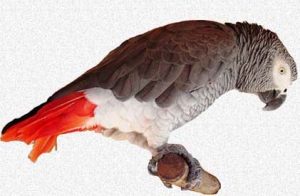
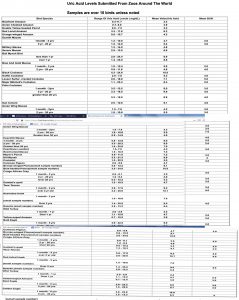
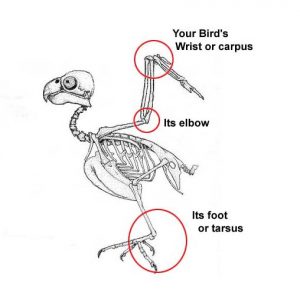
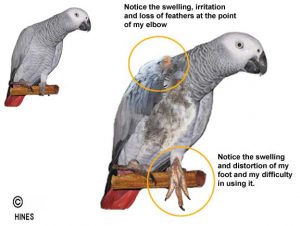

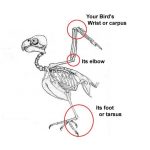
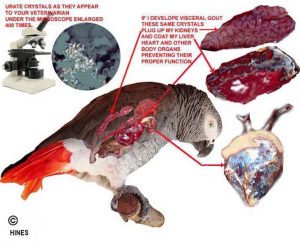
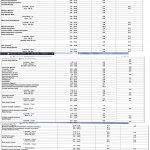
 Dear reader, Besides your donations, Visiting the products that Google chooses to display on this webpage helps me pay the cost of keeping this article on the Web. As you know, sites like mine that are not designed to make money are getting harder and harder to find. Best wishes, Ron Hines
Dear reader, Besides your donations, Visiting the products that Google chooses to display on this webpage helps me pay the cost of keeping this article on the Web. As you know, sites like mine that are not designed to make money are getting harder and harder to find. Best wishes, Ron Hines